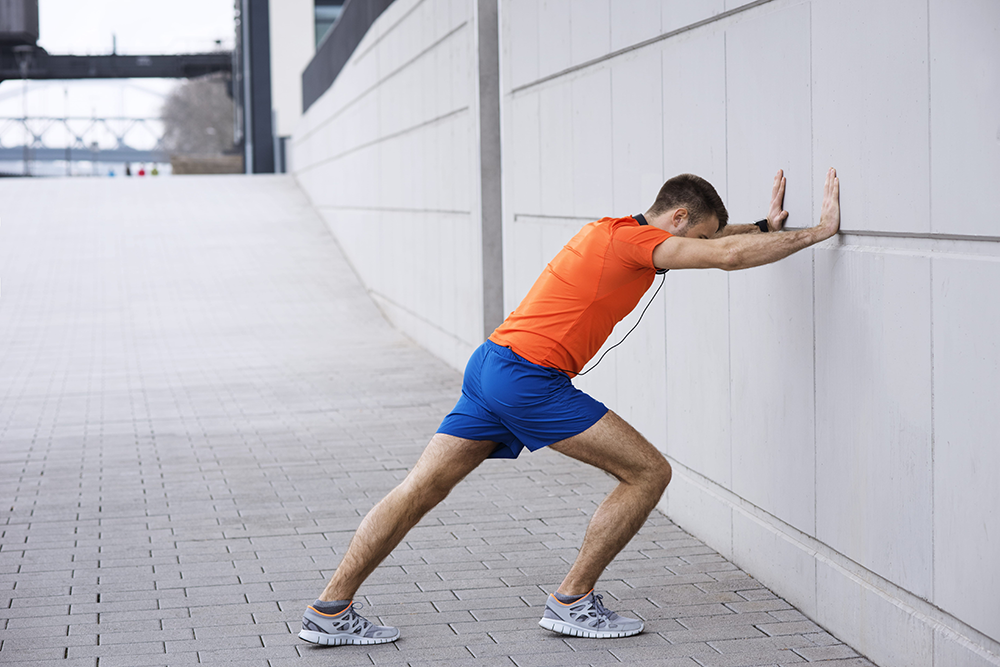Meta Description: Relieve tight calves and boost your mobility with the dynamic calf stretch. Learn why it matters, how to do it right, and when to see a pro at Revolution Rehab.
Why a Dynamic Calf Stretch Might Be the Best Thing You’re Not Doing
Let’s be honest — stretching is often the thing we know we should do, but somehow skip. And when it comes to tight calves, it’s easy to ignore them until something starts to hurt — whether it’s your heel, your ankle, or your knees. That’s where the dynamic calf stretch comes in. It’s simple, effective, and might be the missing piece in your mobility or rehab routine.
At Revolution Rehab, we’ve helped countless people recover from calf strains, Achilles problems, and even nagging plantar fasciitis — and one thing we often recommend? Yep, dynamic stretching. This article breaks it all down: why your calves get tight, what a dynamic calf stretch actually is, and how it might be your secret weapon for better performance and fewer injuries.
Understanding the Calf Muscle: Why Tightness Happens in the First Place
The calf isn’t just one muscle — it’s actually two key muscles working together: the gastrocnemius and the soleus. These muscles start behind your knee and attach to your heel via the Achilles tendon, making them responsible for things like walking, running, jumping, and even standing on your toes.
When these muscles get tight or overworked, they can cause all sorts of problems — not just in your legs, but throughout your lower body. A stiff calf limits ankle mobility, which can throw off your walking pattern and increase stress on other joints like your knees or hips.
So if you’ve been skipping calf work, don’t be surprised if those small aches start stacking up. The dynamic calf stretch is designed to move with your body, giving you better flexibility and joint range without forcing you into a static hold.
Common Reasons Your Calves Feel Like Bricks
You’re not alone if your calves feel stiff, especially in the morning or after workouts. Here are some of the most common culprits we see at Revolution Rehab:
1. Overuse Injuries
Running, jumping, or even just standing for long hours can overwork the calves, leading to microtears or chronic tension. Runners and athletes are especially prone to calf strain if they ramp up too fast or skip recovery.
2. Poor Footwear
Yes, your shoes could be the problem. High heels shorten the calf muscle, while unsupportive sneakers mess with your gait and load the calf inefficiently.
3. Plantar Fasciitis and Achilles Tendinitis
These common conditions are often tied directly to tight calves. If your Achilles feels sore or your heel hurts first thing in the morning, that’s a red flag.
4. Nerve Entrapment or Back Issues
Sometimes calf tightness is not a calf issue at all. Sciatica, spinal stenosis, or other nerve-related conditions can cause tightness or cramping in the lower leg.
5. Lifestyle and Posture
Desk jobs, poor posture, and lack of movement can all lead to shortened calf muscles. Sitting with your feet pointed for hours doesn’t exactly help.
Do I Really Need to Stretch My Calves? (Hint: Probably Yes)
If you’ve ever tried to squat deep and your heels came off the ground, or you’ve had shin splints that won’t go away, your calves are likely part of the problem.
And while static stretches have their place, dynamic stretching prepares your body to move. Think of it as active stretching — controlled movement that takes you through a range of motion, warming up the muscle and the nervous system at the same time.
How to Know If It’s Time to Get Help
You can try a few things on your own, but if your calf tightness is:
- Sharp or sudden
- Associated with swelling or bruising
- Causing numbness or tingling
- Not getting better with rest
…then it’s time to talk to a professional. At Revolution Rehab, we assess the whole chain — from your hips down to your toes — to figure out why your calves are acting up and what you can do about it.
We’ll look at:
- Ankle dorsiflexion range (how far your ankle bends upward)
- Walking and running patterns
- Strength imbalances between your calves, hamstrings, and glutes
- Possible referred pain from your lower back
The goal isn’t just to treat symptoms — it’s to solve the root cause.
How to Do a Proper Dynamic Calf Stretch
This isn’t just bouncing up and down or doing old-school toe-touches. A good dynamic calf stretch targets the muscle through motion, and you should feel it working (but never painful).
Here’s one of our favorites that we often teach during sessions at Revolution Rehab:
Wall or Step Rock-Back Stretch
- Stand facing a wall or on the edge of a step.
- Place one foot back behind you, heel down.
- Gently rock your body forward and back, bending and straightening the front knee.
- Keep the back leg straight to target the gastrocnemius.
- For a deeper soleus stretch, repeat with the back leg slightly bent.
- Do 10–15 slow, controlled reps per side.
This kind of movement-based stretching is ideal before activity or as part of a rehab warm-up. We’ll often combine this with foam rolling, soft tissue release, or activation work depending on the client’s needs.
Other Ways to Release and Relax the Calf
While dynamic stretching is a key piece, it’s often just one part of a broader plan. If you’re dealing with chronic tightness or recovering from injury, you may also benefit from:
- Manual therapy like dry needling or myofascial release
- Theragun or vibration therapy to reduce muscle tone
- Strengthening exercises to balance out weak surrounding muscles
- Taping or orthotic support if poor mechanics are part of the picture
We often combine these approaches at Revolution Rehab to speed up healing and prevent recurrence.
Preventing Tight Calves in the Future
Tight calves aren’t something you just have to live with. If you’re proactive, you can keep things loose, strong, and injury-free. Here’s how:
Move More Throughout the Day If you’re at a desk, set a timer to get up and walk around every hour. Simple calf pumps (rising onto your toes and lowering slowly) can make a difference.
Warm Up Before Workouts Cold muscles = tight muscles. Dynamic stretching, gentle cardio, or mobility drills should be your go-to before training.
Strengthen Your Glutes and Hamstrings Weak glutes often dump extra load onto the calves. Fixing that imbalance can take pressure off the entire posterior chain.
Stay Hydrated and Eat Well Cramping and stiffness can be tied to low electrolytes, dehydration, or inflammation — all of which you can influence with your diet.
Invest in Footwear That Works for You Whether it’s running shoes or daily wear, what’s on your feet matters. We help patients find the right support and even recommend custom insoles when needed.
Let’s Fix Those Calves — For Good
Tight calves are more than just an annoyance — they can derail your performance, cause injuries, or make everyday life uncomfortable. But the good news? It’s fixable.
At Revolution Rehab, we specialize in treating the root cause of movement dysfunction. Whether you’re a runner with a stubborn Achilles, someone recovering from surgery, or just tired of waking up with stiff legs, we’re here to help.
Book your consultation today and let’s build a plan that gets you moving better — with less pain and more freedom.


